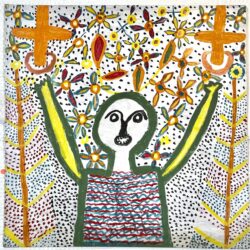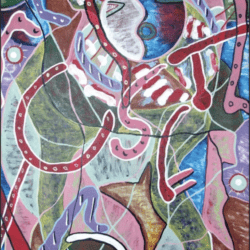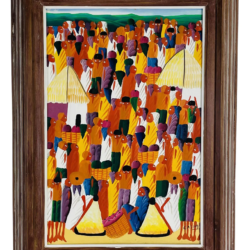Description
Kyra Markham (born Elaine Hyman, 1891–1967) was an actress, figurative painter and printmaker. She worked for the Federal Arts Project, creating works of social realism that documented American life in the 1930s. During World War II, her art was focused on the propaganda effort against the Nazis.
Markham was born Elaine Hyman in Chicago, Illinois. She studied drawing at the Chicago Art Institute from 1907 to 1909, and subsequently worked as a muralist and printmaker. In addition to her work as an artist, Markham was an accomplished actress. She appeared with the Chicago Little Theater from 1909 to the 1920s, with the Provincetown Players from 1916, and in movies in Los Angeles.
Kyra Markham lived in Haiti for several years in the 1940s. She became involved in the Haitian cultural scene, participating in exhibitions and collaborating with local artists. Markham is known for her paintings, which often depicted scenes of daily life in Haiti and celebrated the country’s vibrant culture. She also illustrated Roumain’s novel “Gouverneurs de la Rosée” (Masters of the Dew) which is considered a classic of Haitian literature. After Roumain’s death, Markham returned to the United States and continued her artistic career.
Markham’s artistic career began to gain momentum during the 1930s, regularly winning prizes for her lithographic work. In recognition of her work, Markham received the prestigious Mary S. Collins Prize at the Philadelphia Print Club’s annual exhibition for her lithograph Elin and Maria (1934). From 1935 to 1937, she worked in the Graphic Arts Division for the Federal Arts Project, a New Deal program designed to provide employment for artists during the Depression.
During World War II, Markham created propaganda satirizing the Nazis and promoting patriotism at home. Markham died in Port-au-Prince, Haiti in 1967.






Reviews
There are no reviews yet.